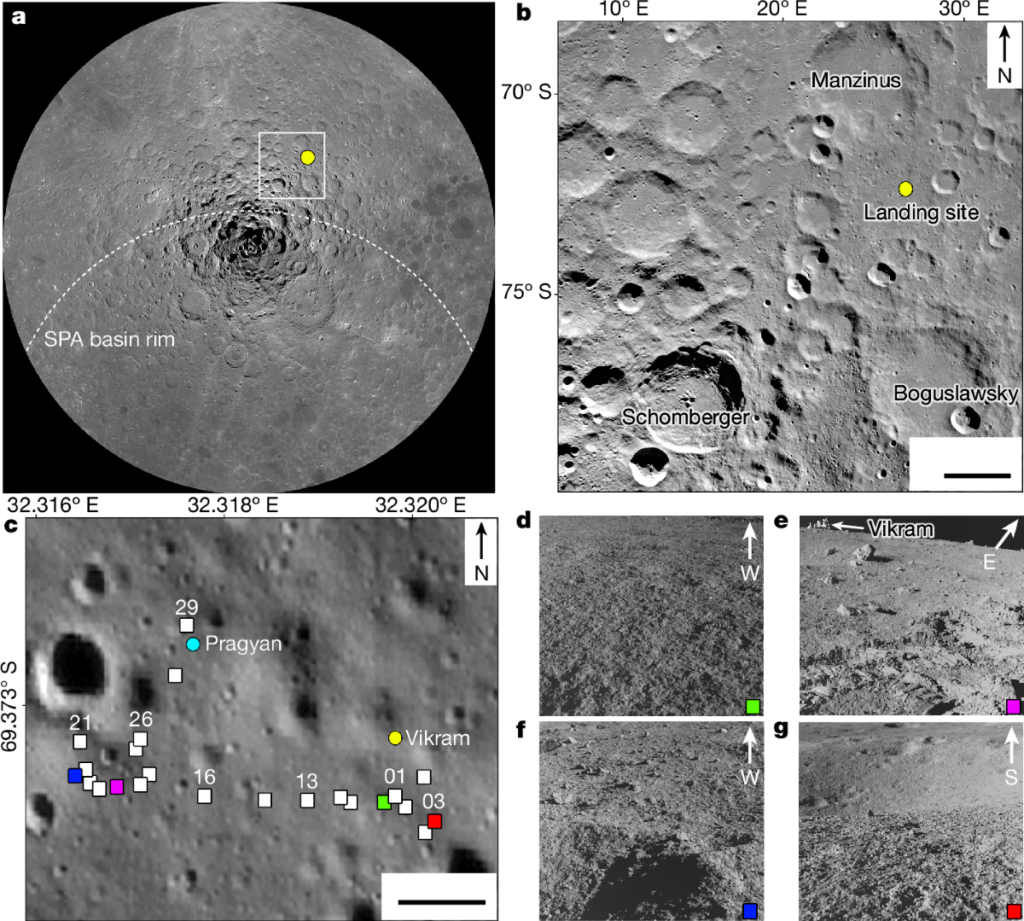Chandrayaan-3 Moon Mission Discovers 160-km-Wide Crater

This discovery emphasizes the mission's success in expanding our understanding of the moon and its early geological history.
India’s Chandrayaan-3 mission has made an exciting discovery: a 160-km-wide crater near its landing site on the moon. The Pragyan rover, which is currently exploring the moon’s South Pole region, detected this crater through data sent back to Earth. This area is rich in materials from past impacts and is a prime target for lunar exploration.
The nearby Aitken basin contributed around 1,400 meters of debris to the landscape, while smaller craters added more geological material. Scientists believe this new crater formed before the Aitken basin, making it one of the oldest geological structures on the moon. Its age means it has been buried under debris from later impacts, which has caused it to degrade over time.
The rover’s high-resolution images provide important details about the crater’s structure. This presents a rare opportunity for scientists to study one of the earliest geological formations on the moon. Understanding these ancient structures can shed light on the moon’s history and the processes that shaped its surface.
Chandrayaan-3, launched by the Indian Space Research Organisation (ISRO), aims to explore the moon’s South Pole, a region of great interest due to its potential water ice deposits and untouched geological features. This area may hold clues about the moon’s formation and the early history of our solar system.
Chandrayaan-3 Moon Mission Discovers 160-km-Wide Crater By examining the crater’s structure and composition, scientists hope to learn more about the moon’s geological past. This discovery emphasizes the mission’s success in expanding our understanding of the moon and its early geological history, making it an important milestone in lunar exploration.






